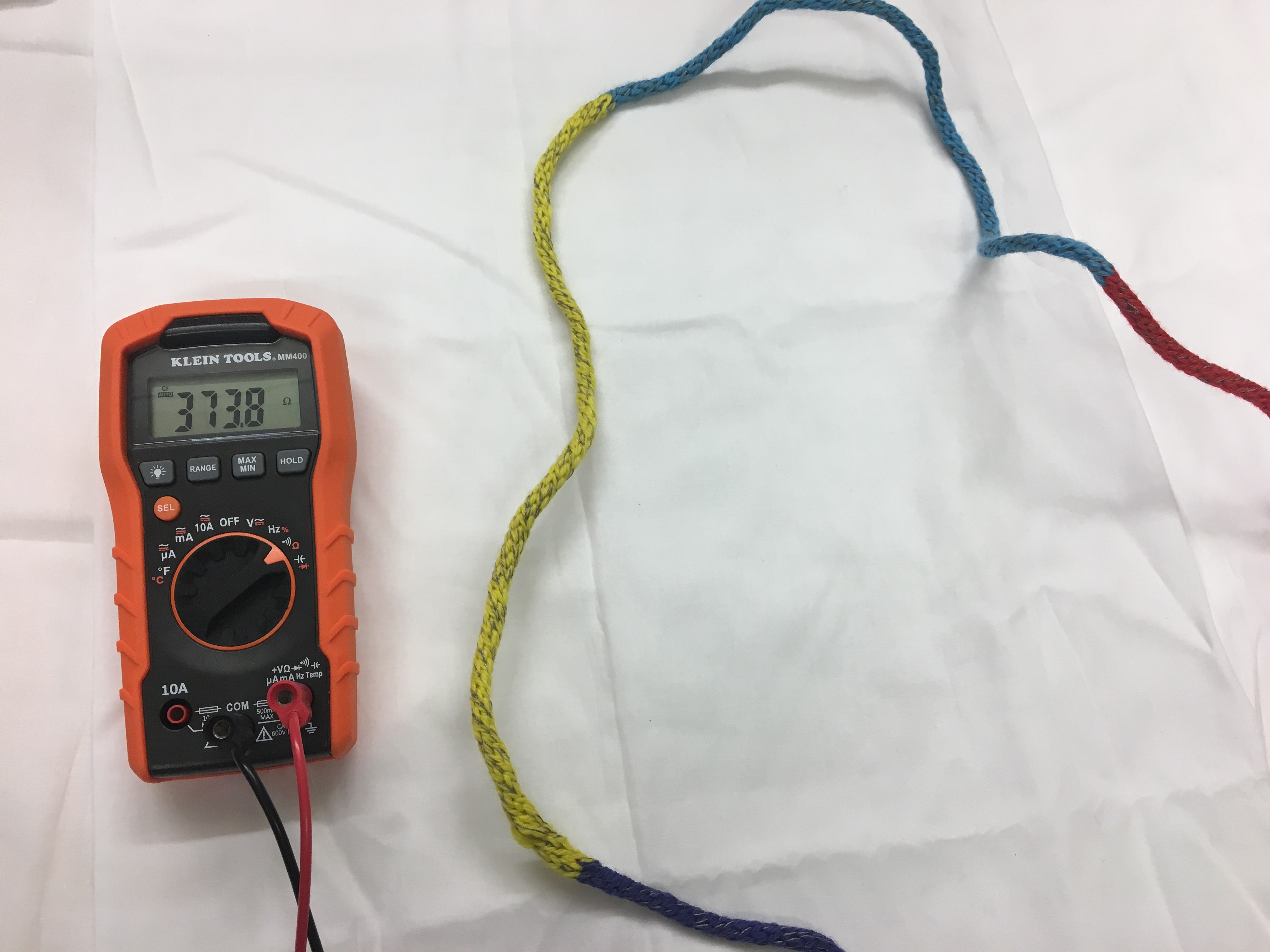Lesson 2: Introduction to Electronics, Making Connections #
Working in e-textiles makes it very evident that electronics aren’t sophisticated things you buy in hard packages, they are just pieces of metal (and sometimes some other stuff) configured in different ways. Just as heat can get stored in the insulating pockets of a wool yarn, electricity is able to move through metallic things. The easier the electricity move, the more “conductive” the metal is said to be.
So, to make a e-textile circuit, you’re going to need something that provides electricity (lets say a battery), and some metal for the electricity to move through, lets say a piece of metal wire. What is nice, is that we can think of the electricity as moving through the wire as a car moves down the highway or water moves through a pipe. It has a “from here to there” quality. To make it go from here to there, it needs a starting point (the + knob of the battery) and an ending point (the -, or ground, knob of a battery). Without a start and end, + and -, the electricity will not move.

A multimeter (shown above) is a lovely device that helps us see what is happening (or help predict what will happen) with electicity in a material. Multimeters measure electicity and it’s worth using them! They can measure three related facets of electricity and electrical materials. First, and most important in our lessons, is resistance. Resistance helps us understand how much electricity would move through a given material, telling us how conductive or not a given metal yarn is. High resistance means low conductivity. Low resistance means high conductivity, because of Ohm’s Law. For more on Ohm’s law and the relationship between resistance, voltage and current, Spark fun offers an incredibly helpful tutorial
For now, we’re going to focus on how to use a multimeter for two purposes:
- (a) to check a material is conductive or that there is a connection between two parts of a circuit using the connectivity feature.
- (b) to measure the resistance of a material.
The worksheet below, also lovingly prepared by SparkFun, is helpful for introduction. Focus on the sections “Continuity and Measuring Resistance”. {{ }}